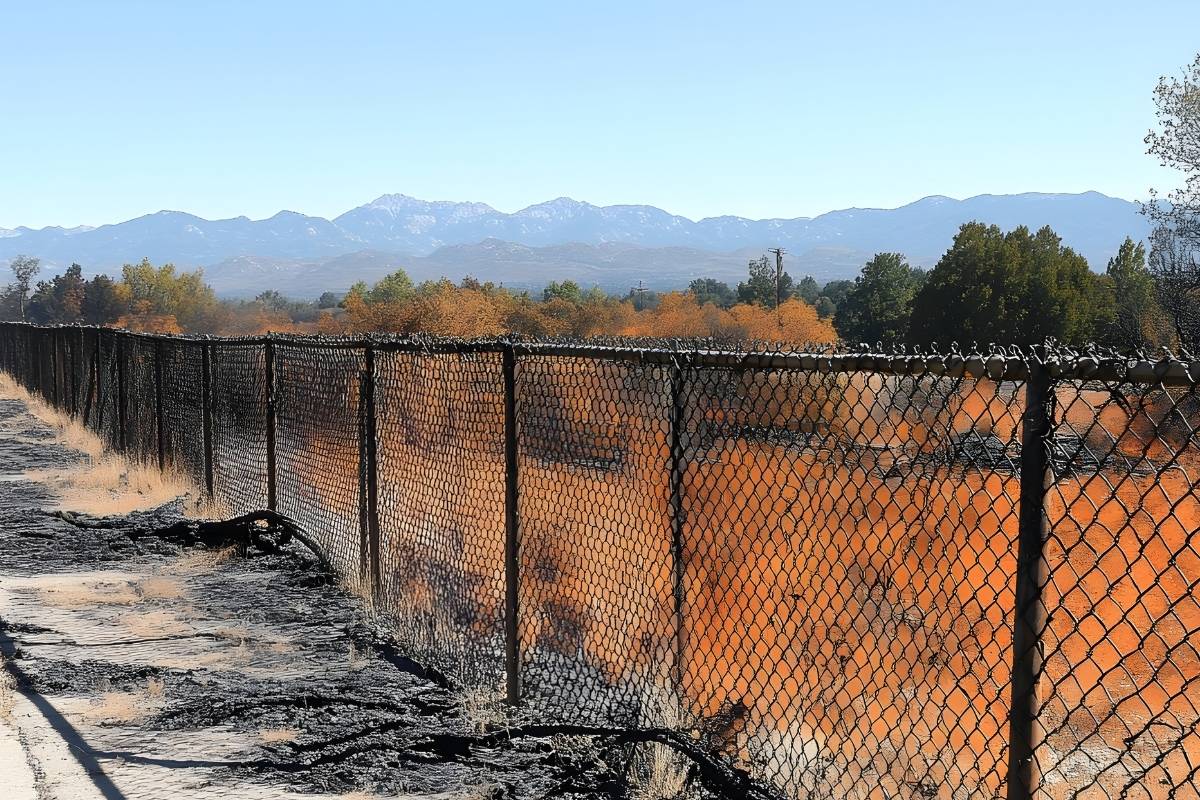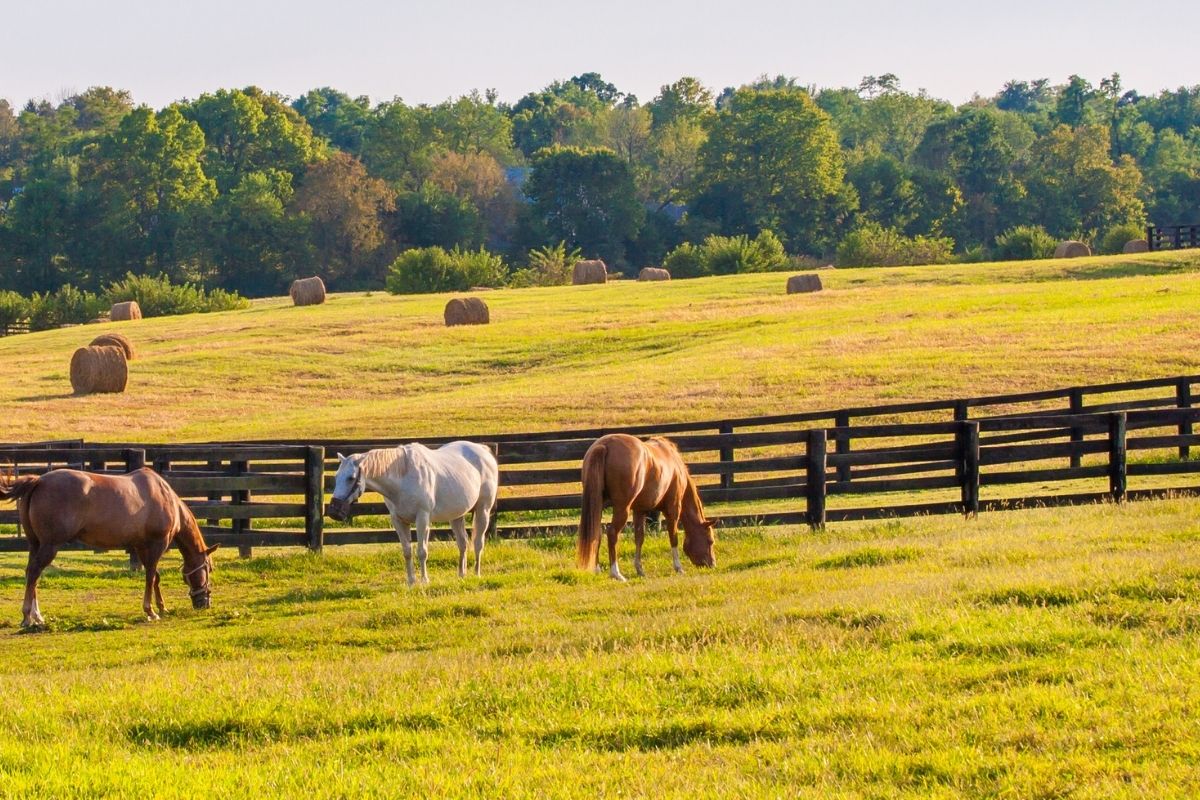Choosing the perfect fence for your property is an important decision that combines functionality, aesthetics, and long-term value. Two popular styles—horizontal and vertical board fences—offer distinct advantages depending on your needs and preferences. This guide breaks down key differences in design, practicality, and materials to help you determine which option best suits your goals.
Aesthetic Appeal
Horizontal Fences
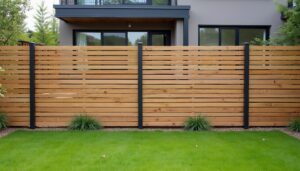
Horizontal fences feature boards arranged parallel to the ground, creating sleek, modern lines that complement contemporary architectural styles. They provide a minimalist look that can enhance the visual appeal of modern homes, urban spaces, or landscaped backyards.
Key benefits of horizontal fences include:
- Modern elegance: Clean lines create a polished, stylish appearance. Explore popular styles of horizontal fences.
- Customizable designs: Varying board widths, spacing, or materials can tailor the look to fit your aesthetic preferences.
- Natural blending: Often built with wood, horizontal fences blend seamlessly into natural surroundings when stained or left untreated.
Vertical Board Fences
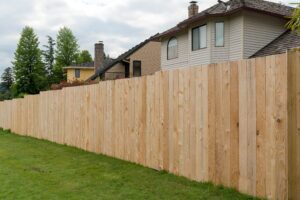
Vertical board fences are the classic choice, often seen in traditional home designs and rural properties. With boards aligned vertically, they ensure a timeless and versatile appearance that complements a broad array of settings.
Highlights of vertical board fences:
- Traditional charm: Their timeless design adds character to cottages, older homes, and countryside properties.
- Decorative options: Additional elements like lattice tops, pickets, or decorative post caps enhance their visual appeal.
- Height emphasis: Vertical lines guide the eye upward, making them an excellent choice for taller fences.
Functionality
Horizontal Fences
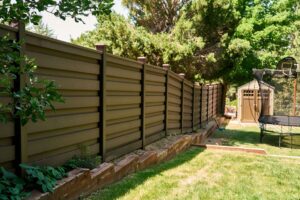
Horizontal fences are known for striking the perfect balance between functionality and aesthetic appeal. While they excel in creating visual interest, they also provide privacy and security. However, it’s important to choose durable materials, as longer horizontal boards may sag over time without proper support.
Advantages:
- Enhanced privacy: Tighter horizontal board spacing can block views effectively.
- Wind resistance: The streamlined design can help reduce wind pressure on the fence.
Vertical Board Fences
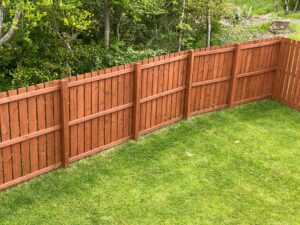
Vertical board fences are the workhorse of fencing, offering reliable strength and durability. They are well-suited to a range of applications, from secure backyard enclosures to agricultural fencing.
Key benefits:
- Sturdy construction: Minimal risk of sagging due to the shorter length of each individual board.
- Ease of repair: Damaged boards can often be replaced individually.
- Versatility: Suitable for sloped or uneven terrains, as boards can be adjusted to follow ground contours. Interested to learn about fences for sloped properties, read our blog on the topic.
Material Options
When selecting a fence, the material plays a crucial role in determining both longevity and appearance. Here’s how horizontal and vertical fences match up in terms of material compatibility:
Wood:
A popular material for both styles due to its affordability and natural charm. Cedar, redwood, and treated pine are great choices that resist rot and insects.
Metal:
Horizontal fences often incorporate metal, such as aluminum or steel, for a more industrial, modern feel. Vertical fences can also feature chain-link for practical perimeter solutions.
Vinyl:
A low-maintenance alternative to wood, vinyl can be used for both fence types and is available in a variety of colors and finishes.
Composite:
Eco-friendly and durable, composite materials combine wood fibers with plastic, offering the look of wood with less upkeep.
Choosing the Right Fence for Your Needs
The decision between horizontal and vertical fences depends on factors such as your property’s style, functional requirements, and budget. If you love contemporary designs and want to make a modern statement, a horizontal fence may be the right fit. For those seeking a durable, traditional option with broad appeal, a vertical board fence is a reliable choice.
At Top Rail Fence, we specialize in custom fencing solutions that balance aesthetics, practicality, and budget. Whether you’re looking to install a sleek horizontal fence or a classic vertical one, our experienced team will guide you through every step of the process. Contact Top Rail Fence today to schedule a FREE consultation. Our team will work with you one-on-one to create a fencing solution that’s as beautiful as it is functional.
Frequently Asked Questions (FAQs)
Which type of fence is more durable—horizontal or vertical?
Both horizontal and vertical fences can be long-lasting when built with high-quality materials and expert installation. Vertical fences tend to have a slight edge in durability because shorter board lengths are less prone to sagging over time.
Are horizontal fences more expensive than vertical fences?
Horizontal fences may cost slightly more depending on the material and design complexity. They often require specialized installation techniques and reinforcement to prevent sagging, which can increase costs.
Which material works best for privacy?
Wood is a preferred option for privacy in both horizontal and vertical styles, as it allows for tight board spacing that blocks visibility.
Do horizontal fences work well on sloped properties?
Horizontal fences can be installed on slopes but require extra planning and possible customization to ensure a consistent, level appearance. Vertical fences, by contrast, are better suited to uneven terrains due to their ability to follow the ground’s contours.
How do I maintain my fence?
Regular maintenance depends on the material. For wood, resealing or staining every 2–3 years can protect against weather damage. Vinyl and composite fences are generally low-maintenance, requiring only occasional cleaning with soap and water.

